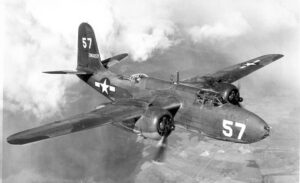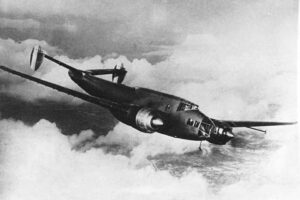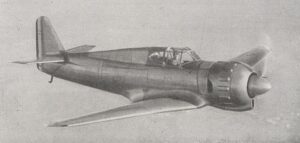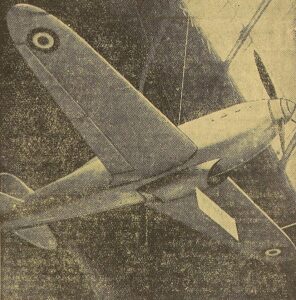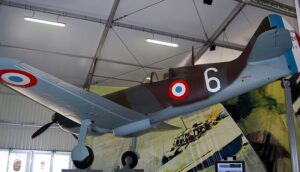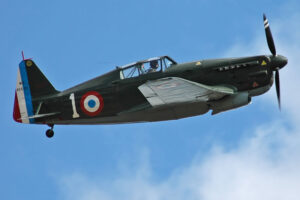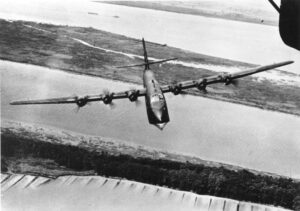Time Period: World War II
Country of Origin: Germany
Type: Helicopters & Vertical Flight
Manufacturer: Focke-Achgelis
Focke-Achgelis Fa 223 Overview
The Focke-Achgelis Fa 223 Drache, which translates to “Dragon” in German, was a large transport helicopter developed by the Focke-Achgelis company during World War II. It was one of the earliest practical helicopters and played a pioneering role in the development of rotary-wing aircraft.
The Fa 223 Drache was designed to meet the need for a versatile and capable transport helicopter that could be used for a variety of missions, including troop transport, casualty evacuation, cargo resupply, and reconnaissance. Its primary purpose was to provide the German military with an aircraft capable of operating in areas where conventional fixed-wing aircraft or ground vehicles could not reach.
The Fa 223 Drache had a distinctive tandem-rotor configuration, with two large, three-bladed rotors mounted on separate pylons above the fuselage. This arrangement provided the helicopter with excellent stability and lift capacity, allowing it to carry heavy loads over long distances.
Powered by a single BMW Bramo 323 radial engine, the Fa 223 Drache had a maximum speed of around 175 km/h (109 mph) and a range of approximately 400 kilometers (250 miles). It was capable of carrying up to six passengers or a payload of around 1,000 kilograms (2,200 pounds), making it one of the largest and most capable helicopters of its time.
The Fa 223 Drache saw limited operational service with the Luftwaffe during World War II, primarily in the transport and reconnaissance roles. It was used for various missions on both the Eastern and Western Fronts, including troop insertion and extraction, aerial photography, and resupply operations.
Fa 223E Specifications
- Crew: 2
- Capacity: 4 passengers
- Length: 12.25 m (40 ft 2 in) fuselage length
- Wingspan: 24.50 m (80 ft 5 in) span over rotors
- Height: 4.36 m (14 ft 4 in)
- Empty weight: 3,180 kg (7,011 lb)
- Gross weight: 3,860 kg (8,510 lb)
- Max takeoff weight: 4,315 kg (9,513 lb)
- Fuel capacity: 490 L (108 Imp gal) internal + 300 L (66 Imp gal) external tank
- Powerplant: 1 × BMW Bramo 323D-2 nine-cylinder radial, 750 kW (1,000 hp) at take-off
- Main rotor diameter: 2 × 12.00 m (39 ft 4 in)
- Main rotor area: 226.00 m2 (2,432.6 sq ft)
Fa 223E Performance
- Maximum speed: 176 km/h (109 mph, 95 kn) at 2,000 m (6,600 ft)
- Cruise speed: 134 km/h (83 mph, 72 kn) at 2,000 m (6,600 ft)
- Range: 437 km (272 mi, 236 nmi) internal fuel
- Ferry range: 700 km (430 mi, 380 nmi) with auxiliary fuel
- Endurance: 2 hr 20 min
- Service ceiling: 4,875 m (16,000 ft) service ceiling
- Rate of climb: 4.1 m/s (800 ft/min) (vertical rate of climb), 5.6 m/s (1,100 ft/min) with forward speed
Fa 223E Armament
- Guns: 1 × MG 15 machine gun manually aimed from the nose.
- Bombs: 2× 250 kg (550 lb) bombs or 2x depth charges
Focke-Achgelis Fa 223 Image Gallery
More Luftwaffe Aircraft
The Luftwaffe, the German air force during World War II, fielded a diverse range of aircraft that played critical roles in the conflict. These aircraft encompassed fighters, bombers, reconnaissance planes, transport aircraft, and more. Explore others:
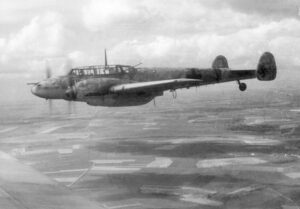
Messerschmitt Bf 110
The Messerschmitt Bf 110 was a German twin-engine destroyer fighter-bomber developed in Nazi Germany in the 1930s and used in WW2.
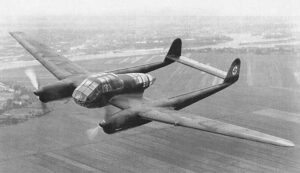
Focke-Wulf Fw 189 Uhu
The Focke-Wulf Fw 189 Uhu is a German twin-engine, three-seat tactical reconnaissance and army cooperation aircraft used during WW2.
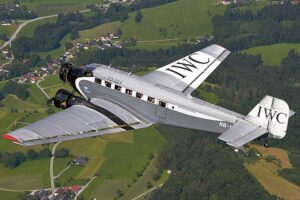
Junkers Ju 52 Tante Ju
The Junkers Ju 52 was a German transport aircraft designed by Junkers used as both an airliner and deployed during World War II.
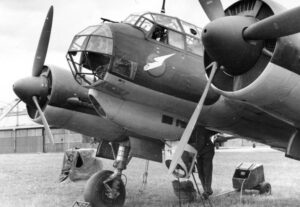
Junkers Ju 88
The Junkers Ju 88 was a German Luftwaffe twin-engined multirole combat aircraft introduced in 1939 and used widely during World War II.
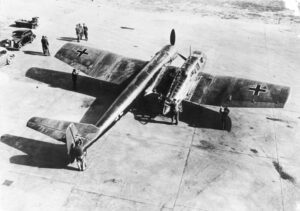
Blohm & Voss BV 141
The Blohm & Voss BV 141 (originally known as the Ha 141) was an asymmetrical World War II German tactical reconnaissance aircraft.


